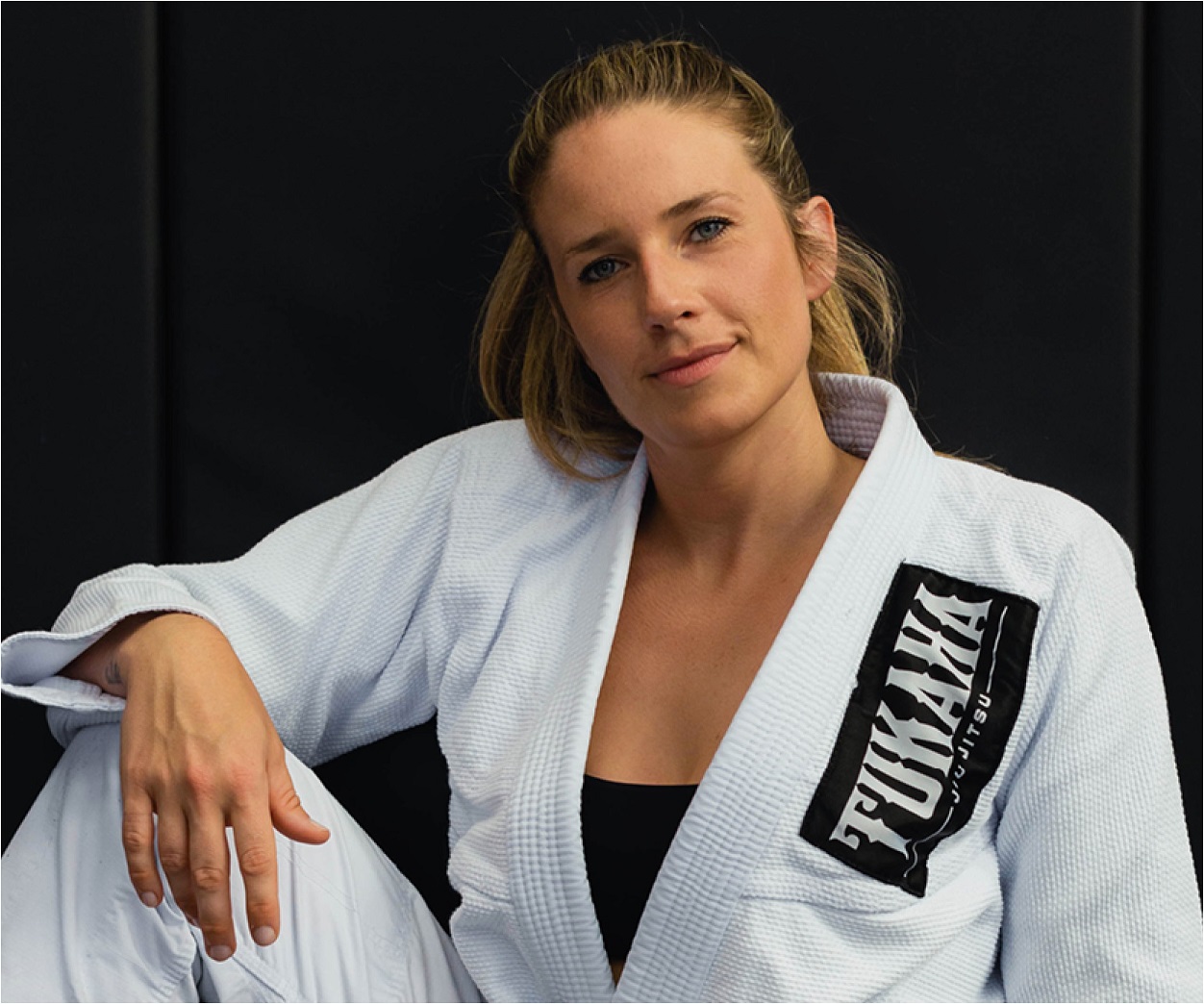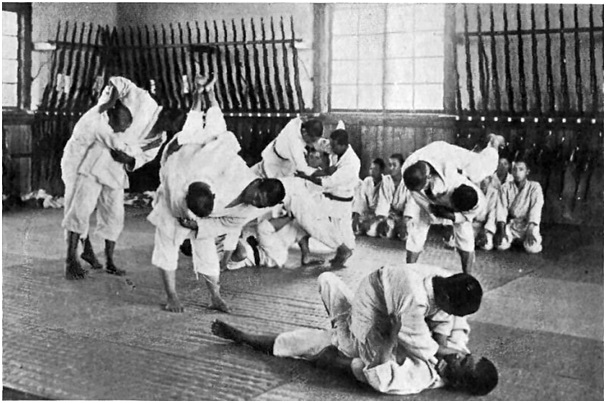 What Is Jiu Jitsu?
What Is Jiu Jitsu?
What is Jiu Jitsu? It is a grappling art that focuses on reducing the risk of injury during control and submission. This technique is very useful in MMA sparring. In this article, we will discuss some of the benefits of this martial art. You will learn how it can help you defend yourself against bigger opponents. It is also a beautiful form of exercise. This martial art is incredibly versatile and can be practiced by just about anyone.
Jiu-Jitsu is a grappling art
Jiu-Jitsu is a martial art that focuses on submissions, takedowns, and skeletal leverage. It emphasizes winning from the back and relies on ground and limb control to submit opponents. Jiu-Jitsu is often practiced in a gi, but shorts and a rash guard are also common. In its traditional form, Jiu-Jitsu practitioners wear a black gi or rash guard.
The art has numerous benefits, ranging from personal safety to physical fitness. In many cases, it saves lives. It also increases the mind and reasoning skills of its practitioners. When practicing the martial art, one is constantly thinking about the next move, preparing for the next maneuver. Practicing with a partner will increase their ability to think quickly and remain calm when in a defensive situation. Jiu-Jitsu is not only useful in combat situations, but can save one’s life.
Its practice originated in Brazil, where it is known as Jiu-Jitsu. The goal of the art is to submit an opponent by controlling their body position and applying joint locks. Developed by the Gracie family, Jiu-Jitsu is the most effective martial art today. Jiu-Jitsu is a grappling art with a unique meaning: it means “gentle art,” and it can be extremely powerful.
Throughout history, many people have been swept off their feet by a master of Jiu-Jitsu. These men, however, have been able to escape this fate by learning the basics of the art. They’ve mastered the techniques to dominate their opponents. By dominating an opponent’s body position, they have become champions. Ultimately, this art is about dominating your opponent and using superior body positioning.
It reduces the risk of being hurt while controlling and submitting an opponent
As the popularity of BJJ grows, the need for effective methods of injury prevention is also increasing. One such technique is Jiu-Jitsu. By learning how to control and submit an opponent through grappling, a person can greatly reduce the chance of getting hurt. Various studies have shown that this technique reduces the risk of spinal injuries, head trauma, and lacerations.
In addition to reducing the risk of being hurt while submitting an opponent, a BJJ practitioner should visit his physician to diagnose a physical injury and get recommendations for treatment. A physician may prescribe rest and massage to alleviate soreness. The doctor may recommend that a fighter refrain from training for several months, allowing his body to heal itself. A sports injury doctor can also recommend exercises to strengthen muscles and prevent further injuries.
In addition to learning the basic techniques, a person should also work on developing flexibility and mobility. Flexibility is important for controlling and wrapping an opponent’s legs. However, lack of flexibility in the hips can result in additional strain on the back and can cause injuries. Moreover, incorrectly executed leg locks may cause damage to a person’s knees.
High-level Jui Jitsu practitioners prefer learning techniques that work the best in order to minimize their risk of being hurt while controlling and submitting their opponent. This is why Roger Gracie, the best competitor of all time, can submit world champions with a White Belt technique. Some people who train in jiu jitsu may be wondering why they should risk serious injury while grappling.
It’s useful in MMA
In addition to striking skills, Jiu Jitsu is useful for ground fights. While it is not as violent as Mixed Martial Arts (MMA), it is useful for the submissions that are so important in MMA. Furthermore, jujutsu practitioners learn body balance, coordination, and physics. They can be aggressive if they want to, but they know how to manage a fight. Consequently, jujutsu fighters can be more effective in MMA.
Regardless of its use in MMA, bjj is useful for grappling, body throws, and joint attacks. While bjj is used in traditional combat, it has become a very important part of MMA. Braziallian Jiu Jitsu (BJJ) practitioners use joint locks and chokeholds that can be useful in cage matches. They are also a great way to avoid injuries, as well as avoid an opponent’s strikes.
As a martial artist, you have the advantage of knowing all the components of MMA. BJJ is better for ground techniques, so MMA fighters can learn it and adapt their style to defend against BJJ. Additionally, if you train in MMA, you can use the cage to your advantage. You can use it defensively to avoid takedowns, or even use it offensively to pin opponents.
A good example of this is the triangle choke. With legs on two sides, the shoulder on the third, the triangle choke is a great way to control your opponent. By placing your legs against the opponent’s neck, you can use your leg strength to lock them up and put them under pressure. The angles play an important role in finishing the triangle choke, so be sure to use them carefully. While a rushed submission is bad in any situation, it’s even worse when your opponent is capable of raining elbows and punches.
It’s beautiful
There are many reasons to learn jiu jitsu, but they all revolve around the same central theme: it is beautiful. Jiu Jitsu is not only physically beautiful; it can also save lives! It is intimate, teaches responsibility, and builds close relationships. Despite its many benefits, jiu jitsu can be intimidating for the average person. But once you learn how to protect yourself, you’ll be glad you took up this sport.
Originally, the art was geared for larger men, who could not use brute force effectively. The Brazilians, who had learned the art in Japan, struggled in their training. They eventually developed refined versions of the art to accommodate smaller warriors. Today, jiu jitsu is predominantly a ground fighting art. But what’s the best way to learn it? If you want to learn jiu jitsu for beginners, you need to learn it from a coach or an experienced jiu jitsu student.
One reason jiu jitsu is beautiful is because its practitioners strive to make it look as beautiful as possible. For example, Rickson Gracie once said that it wasn’t just about beating your opponent; it was also about how you look. Martial artists are like writers and painters – they use their craft to create works of art. They take pride in coming up with new creative methods. They enjoy the challenge of developing techniques that are both beautiful and functional.
The beauty of Brazilian Jiu Jitsu is apparent in its long history. Despite its martial origins in mixed martial arts, it is an effective art that emphasizes the use of leverage, momentum, and technique. It makes it possible for even the smallest individual to defend himself against a larger opponent. That’s why Jiu Jitsu is known as the “gentle art.”
It’s individual
Many people make the mistake of thinking that Jiu Jitsu is a sport for men. Although this is not the case, Jiu Jitsu is a sport that requires teamwork. The sport encourages teammates to be inseparable, and the support of a good coach makes training in Jiu Jitsu fun and rewarding. If you’d like to compete in this sport, you must be willing to dedicate a considerable amount of time to the practice.
In other sports, teams work as a unit. A basketball team, for example, will have players with different functions and styles working together to score goals. Jiu Jitsu, however, is not a team sport. While the competitions are team-based, individual victories are still the main goal. Only in some competitions do teams appear to be truly team-based – such as in a WWE-style tag-team competition – but that’s because no two teams have the same skill level.
Most BJJ competitors start in the standing position, but most of the battle takes place on the ground. The objective of the sport is to force your opponent to submit to your will. Submissions may be obtained through joint locks, chokes, or pressure techniques. If a submission is not possible, a match is decided by scoring specific techniques. Techniques include takedowns, guard passes, sweeps, and joint locks.
The sport is highly technical and requires focus. This makes it ideal for children. Students will develop concentration and focus skills, which will be invaluable in their adulthood. This sport will also provide them with the confidence to defend themselves against attackers, which can be very useful in a variety of circumstances. The focus and concentration gained by BJJ practitioners will last a lifetime. It’s a good time to start teaching this sport to your children!
Jiu-Jitsu Origins and History
The origins of Jiu-Jitsu are difficult to trace, but the basic elements of the art can be traced to a number of different locations, including Native America. Because it is a natural form of combat, it is difficult to attribute it to one individual, group, or time period. Instead, it is a synthesis of many different cultures and traditions. Read on to learn more about the history of Jiu-Jitsu.

Jiu-Jitsu’s founder
The origins of Jiu-Jitsu are unclear, but there are several theories on how it developed. The earliest accounts suggest that it developed in ancient India, then spread to feudal Japan. The practice of jiu-jitsu soon evolved into an effective form of hand-to-hand combat. Eventually, it became an art and a competitive sport. Nevertheless, the history of Jiu-Jitsu is far from over.
Maeda traveled to Brazil in the early part of the twentieth century, where he befriended a wealthy businessman. He was able to pass on his knowledge of traditional Japanese Jiu-Jitsu to Carlos Gracie, who would later become the first black-belt of the sport. Maeda would go on to train his sons and grandchildren in Jiu-Jitsu, and his brothers, including Helio, would later become famous as the father of modern-day Jiu-Jitsu.
Carlos Gracie Jr. took the art of Jiu-Jitsu to Brazil after his brother escaped the country during World War I. He would go on to train with other students, and eventually create the first BJJ academy. However, he never lost sight of his philosophy. He envisioned Jiu-Jitsu as a means of reaching your full potential. By focusing on the basics of the martial art, students would gain self-control and a strong self-image.
Although Jiu-Jitsu developed in Brazil, its origins were much older in Japan. Japanese soldiers used it as their last line of defense during battle. Later, Jiu-Jitsu evolved into a self-defense discipline. The Kodokan school was established by Jigoro Kano in 1882. The Kodokan school of thought is a continuation of the traditional Japanese art of Jiu-Jitsu.
Evolution Of Jiu-Jitsu
Jiu-Jitsu is a form of martial art that has been practiced for thousands of years, spanning from Samurai times to the Gracie style. Its practice is based on manipulating your opponent to stop a fight in its tracks. It’s a great way to stay in shape and stay fit without having to engage in physical combat. If you’re new to jiu-jitsu, you can start with a beginner’s class and slowly evolve into a professional.
The earliest known Jiu-Jitsu styles date back to the Samurai period, when martial artists practiced in the mountains of Japan. Samurai, or warriors, were well-armored and often fought on horseback. They were also vulnerable to attack and had to stay focused and on guard for their safety. Jiu-Jitsu was designed to help Samurai fight on foot. The art evolved to include throws, joint locks, strangles, and striking techniques.
While practicing jiu-jitsu, remember that your goals should be attainable and achievable. It’s important to keep a daily journal and attack at least 10 main points per week. To make it easier to stay motivated, eat a light meal before training and drink plenty of water throughout the day. And don’t skip your warm-up! Your habits can make your Jiu-Jitsu evolution slower. You can also ask questions. You may find new escapes and solutions to common problems.
The new generation of grapplers changed the sport forever. The Mendes brothers spun like Ninja Turtles. The Miyaos brothers created new guards and leg locks. Some of the top grapplers discovered new guards and developed their leg lock game to unprecedented heights. And the evolution of BJJ continues to this day. The mendes brothers are one of the most well-known and respected names in BJJ.
Jiu-Jitsu’s development into Judo
The most notable development in Jiu-Jitsu was the development of non-cooperative sparring, known as Randori. Randori allowed practitioners to learn correct mindsets against an opponent resisting their techniques. This helped develop the physical strength and technical proficiency required for fighting an opponent. Eventually, the technique evolved into what we know as Judo. However, this is an ongoing process.
The art of Judo was originally named Jujutsu and was developed in feudal Japan by a man named Jigoro Kano. He learned the techniques of Jujutsu from the ancient Japanese martial art, Tenshin Shin’yo, as well as the Chinese style of Kito Ruy. It was later called Judo because of its emphasis on throwing and combining different styles of Jujutsu.
While Helio Gracie was in the early stages of developing the art, he was still a frail child when he moved to Brazil to train with his brothers. He wanted to study Judo himself, but doctors advised him to watch his brothers. He also began training with Carlos, who was teaching Kano Judo, which was based on groundwork. Jiu-Jitsu remained known as “newaza” in Brazil until the 1950s.
As with Judo, Brazilian Jiu Jitsu is primarily a grappling system. It emphasizes joint locks, chokeholds, and other techniques to control and dominate an opponent. The sport version is most commonly used in mixed martial arts competitions and sport grappling tournaments. There are also many competitions and tournaments in which Brazilian Jiu-Jitsu is used.
Its evolution into various Ryu styles
The evolution of Jiu-Jitsu began in Japan, where the samurai, a noble warrior caste, practiced grappling and throwing techniques to gain an advantage over their opponents. The Asuka period sowed the seeds of the samurai class and the nation’s organized military. This was an era that valued grappling techniques over striking.
Originally derived from Judo, Fusen Ryu fighters developed a form of Jiu-Jitsu that emphasized the ground. Judo was almost exclusively based on stand-up throwing techniques. As such, the evolution of jujutsu into various ryu styles was an ongoing process. This evolution has led to the development of several different martial arts, including Judo, Aikido, Brazilian jiu-jitsu, and mixed martial arts.
Competition is another factor that contributes to the evolution of a martial art. Throughout its history, Jiu-Jitsu has been developed through the years by different schools. The evolution of a ryu style began in Japan and traveled to many Asian countries. As it evolved, it changed to a more advanced form, gaining more emphasis on leg locks. Jiu-Jitsu has also been influenced by the popular anime series Jujutsu Kaisen, which stars Kenshin Kano.
After Mitsuyo Maeda’s emigration to Brazil, the Kodokan jiu-jitsu became popular. Gracie’s father, George Gracie, had immigrated from Scotland, and the two worked together. Carlos Gracie learned Jiu-Jitsu from Maeda and later shared it with his brothers. In 1925, he founded the first Jiu-Jitsu academy in Brazil.
Focus on take downs
While many people believe that Jiu-Jitsu focuses on take downs, this is not necessarily the case. Lighter weight divisions are often criticized for not engaging in stand up action, but it is possible to take down opponents in the lighter weights. The focus on take downs is due in large part to the fact that there are so many other techniques that can make an opponent lose control of their body.
Most fights begin from a stand up position, so striking skills are an important part of the game. In jiu-jitsu, the goal of striking isn’t to knock the opponent out, but to close distance and establish control. Typically, striking combinations are used to take down one opponent, while continuous throws and dynamic entries keep multiple opponents standing. While strikers often focus on take downs, grapplers also use grappling and joint locks to control the position and keep their opponents at bay.
The focus on take downs is also a major strength of Brazilian Jiu-Jitsu. Many BJJ tournaments begin on the feet, and athletes without proper technique will often be at a disadvantage versus more experienced competitors. Pulling cards is not always a bad idea, but properly executed takedowns can put an athlete in a dominant position right from the start.
As a rule of martial arts, it’s best to learn the stand-up game in addition to the takedowns. While the stand-up game should be a primary focus, cross-training in other arts can supplement your Jiu-Jitsu training regimen. For example, learning judo or wrestling can transform your ground game and improve your take downs. It is worth taking a few classes in each art to help you become more versatile and efficient in all three areas.

